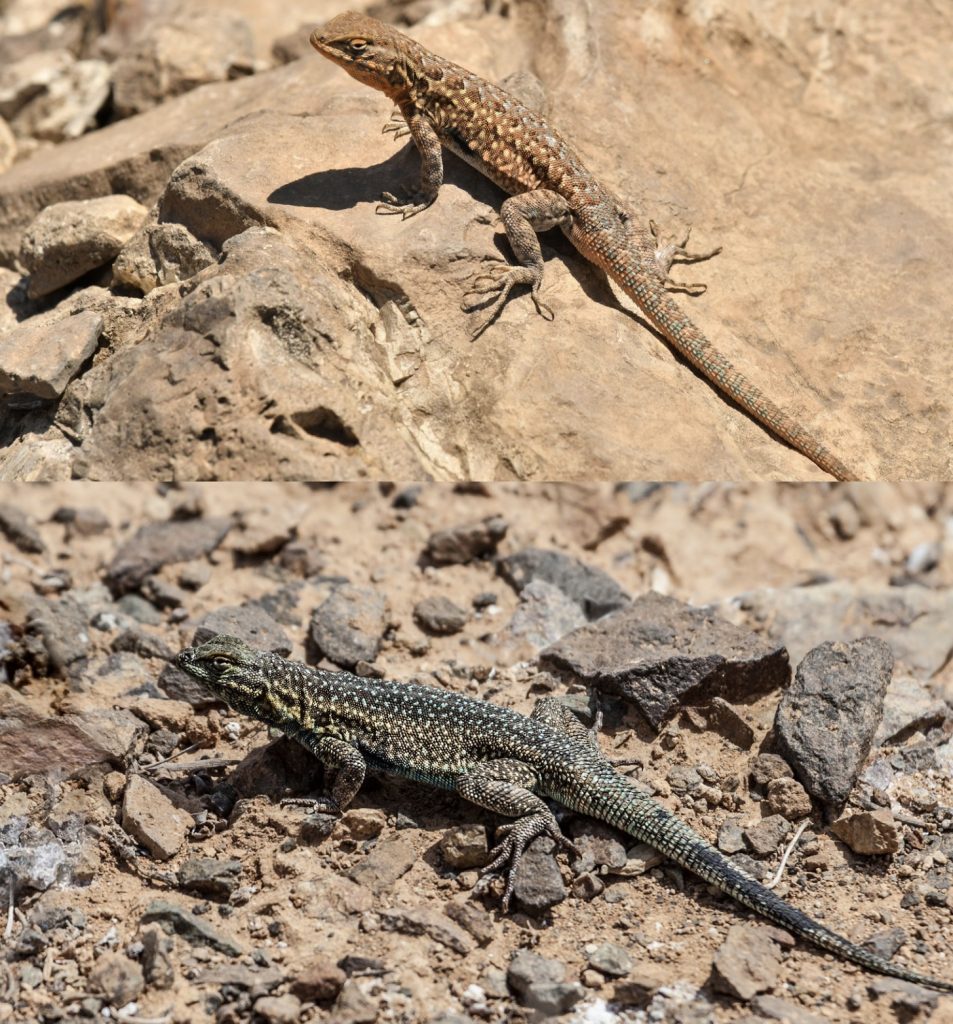
At first glance, side-blotched lizards appear to be essentially classic lizards: small, fast and brownish with a bit of blue. Yet these lizards are remarkable in their own ways. My goal this week is to teach you how to identify one — and how to impress your friends by teaching them how to identify one — along with a few fun facts.
There is some debate whether we have here in LV/ES the western or common subspecies, but it doesn’t really matter unless you plan on doing DNA samples. Side-blotched lizards are usually no more than 5 cm (2 in) long, excluding the tail, which is sometimes longer than the lizard itself. Side-blotched lizards are actually somewhat hard to find around here; they aren’t rare, they just seem to live in little pockets of desert, completely avoiding other areas. Just an hour north, however, they become ever present.
If you see a side-blotched lizard, usually you see a little movement, then you stare into the spot where you saw it for a while, then you decide it was nothing and start turning around before the lizard moves again, and stares at you with the superior air of royalty, knowing he’s untouchable. Then it runs deep into the nethers of whatever bush it was sitting next to, and there is no hope of seeing it again.
Side-blotched lizards have pointy snouts and usually come in shades of grayish brown with lots of little spots of blue, yellow and other colors on their sides and backs. Their tails are most often just gray or slightly blue, and their eyes are black and extraordinarily snobbish, although I may be biased based on the fact that I have never managed to catch one. Somehow they always have an escape route. Anyway, they are gray, have blue spots, except for sometimes they don’t because sometimes they are striped, and sometimes they look just like every other type of lizard. For the sake of this column, we are going to stick with the most common color scheme: gray or brown with spots.
Male side-blotched lizards sometimes sport amazing reds, yellows, blues and oranges, and/or have black spots just behind their front legs. These should be the easiest traits to spot. They seem to love coming out right around the time the sun goes behind the mountains, and I have even seen them at night occasionally. There are some interesting studies about the males of different colors having different mating strategies, somewhat like a rock/paper/scissors match, but I am running out of space, so maybe more on this next time.
What impresses me most about side-blotched lizards is how adaptable they are. They inhabit some tiny islets with just a few bushes on them; they thrive on the sidewalks of La Paz; and essentially the same lizard can be found all the way up to Washington state! They are definitely impressive lizards, even if they are a bit stuck up.
If you enjoyed this article, please follow me on my Substack, Beneath the Scales. If you would like to join me on a reptile walk, here is a link to my Reptile Walks WhatsApp chat.